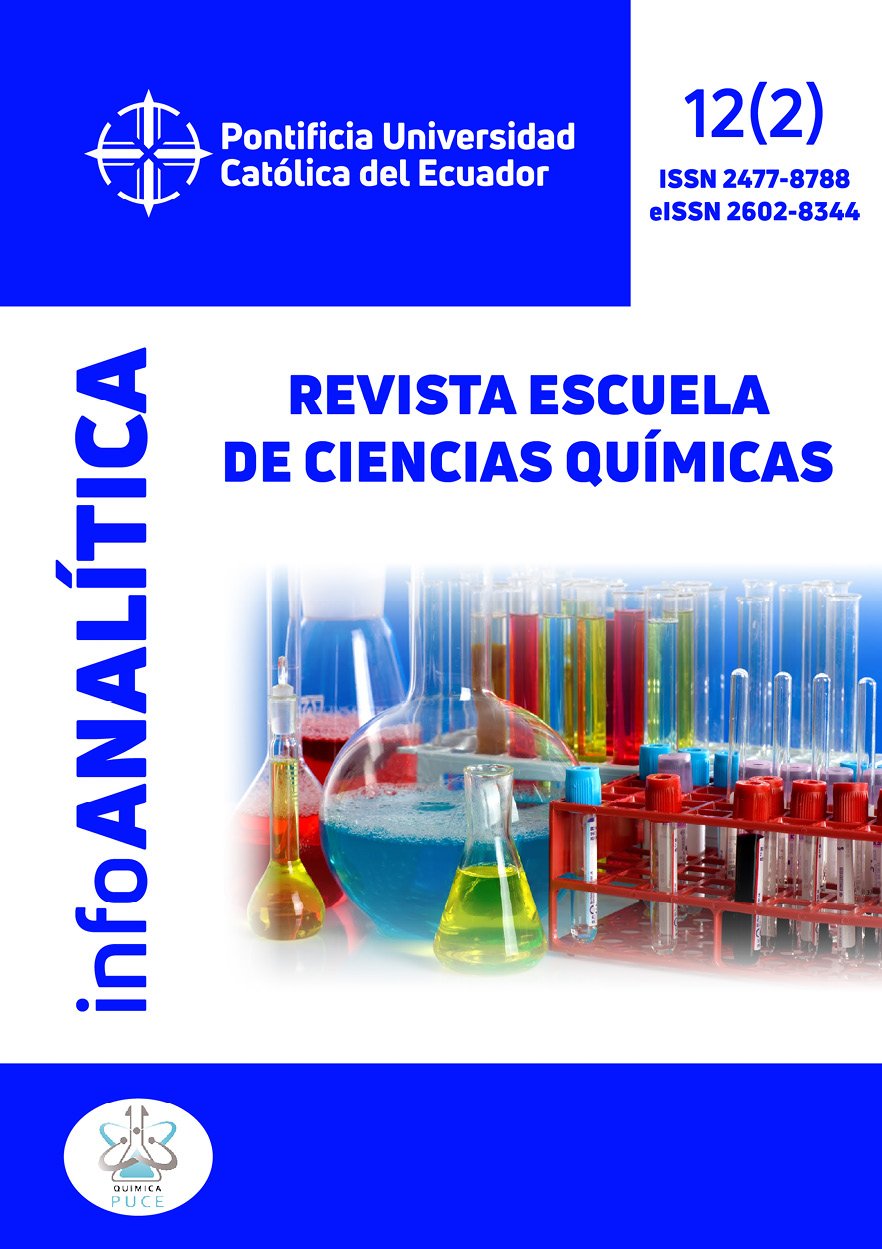OPTIMIZATION OF ASTAXANTHIN EXTRACTION FROM LITOPENAEUS VANNAMEI SHRIMP EXOSKELETON USING A TERNARY SOLVENT MIXTURE WITH AUGMENTED SIMPLEX RETICULAR DESIGN
Main Article Content
Abstract
In this study, the Simplex Reticular Augmented (SRA) experimental design was used to fit the mathematical equation, that models the yield of astaxanthinextraction from the exoskeleton of Litopenaeus vannamei as a function of the proportions of dichloromethane, acetone, and n-hexane. The fitted equation, with a correlation coefficient R2 of 0.9802, demonstrated its validity as a model for calculating extraction yield. Based on the fitted equation, an optimization region containing the six best solvent combinations was defined. This region was located at the top of the simplex, where the concentration of dichloromethane is higher and the polarity of the mixtures ranges between 1.5 and 4. It was determined that the interaction between dichloromethane and n-hexane was not significant at a significance level of 0.05. For a minimum yield of 14 μg/g, it was identified that the optimal mixture for the extraction of astaxanthin should contain 80% dichloromethane and 20% n-hexane, with a polarity of 2.72. This combination led to a yield of 15.6 μg/g, exceeding the yield obtained with dichloromethane alone (14.7 μg/g). The effectiveness of this methodology lies in its ability to systematically explore the design space and provide detailed information on the interactions between solvents.
Downloads
Article Details
- The authors agree to respect the academic information of other authors, and to assign the copyrights to the journal infoANALÍTICA, so that the article can be edited, published and distributed.
- The content of the scientific articles and the publications that appear in the journal is the exclusive responsibility of their authors. The distribution of the articles published in the infoANALÍTICA Journal is done under a Creative Commons Reconocimiento-CompartirIgual 4.0 Internacional License.
References
Aravena Contreras, R. I. (2011). Extraccion de astaxantina de Haematococcus pluvialis usando CO2 supercrítico. Pontificia Universidad Católica de Chile.
Brito, C. (2022). Optimización multiobjetivo de una mezcla de fructosa, glucosa y sacarosa mediante un diseño de centroide simplex. Universidad Central del Ecuador.
Espinosa-Álvarez, C., Jaime-Matus, C., & Cerezal-Mezquita, P. (2019). Some physical characteristics of the O/W macroemulsion of oleoresin of astaxanthin obtained from biomass of Haematococcus pluvialis. DYNA, 136 - 142.
García, R., et al. (2019). “Synergistic Solvent Combinations for Improved Colorant Extraction: Insights from Simplex Reticular Augmented Design.” Chemical Engineering Journal, 42(1), 89-104.
Hernández, M., et al. (2020). “Economic Benefits of Augmented Simplex Lattice Experimental Design in Solvent Optimization for Dye Extraction.” Applied Chemistry, 15(2), 201-215.
Herrera Andrade, M., Sánchez Machado, D., López Cervantes, J., Nuñez Gastelum, J., & Moreno Ramos, O. (2011). Extracción de astaxantina y su estabilidad. Revista Latinoamericana de Recursos Naturales, 7(1), 21 - 27.
Loch-Neckel, G., Schütz, F. E., Bianchini Derner, R., & Lemos-Senna, E. (2018). Obtaining dried extracts from the biomass of the microalga Haematococcus pluvialis by spray drying. Materia, 4(23).
Maila, C. (2023). Desarrollo de un método eficiente de extracción de astaxantina procedente de exoesqueleto de camarón (Litopenaeus vannamei). Quito: Tesis Licenciatura.
Mongomery, D. C. (2017). Montgomery: Design and Analysis of Experiments. In John Willy & Sons.
Sánchez, A., et al. (2021). “Optimizing Dye Extraction through Augmented Simplex Lattice Experimental Design.” Journal of Chemical Engineering, 28(3), 567-580.
Scheffe, H. (1963). The simplex‐centroid design for experiments with mixtures. Journal of the Royal Statistical Society: Series B (Methodological), 235 - 251.
Sharayei, P., Azarpazhooh, E., Zomorodi, S., Einafshar, S., & Ramaswamy, H. S. (2021). Optimization of ultrasonic-assisted extraction of astaxanthin from green tiger (Penaeus semisulcatus) shrimp shell. Ultrasonics Sonochemistry.
Snyder, L. R. (1974). Classification of the solvent properties of common liquids. Journal of Chromatography A, 92(2), 223–230. https://doi. org/10.1016/S0021-9673(00)85732-

